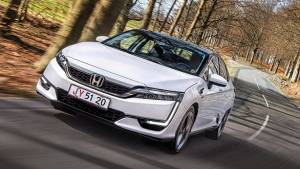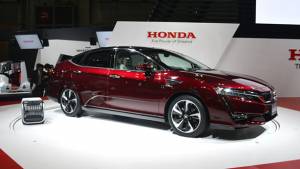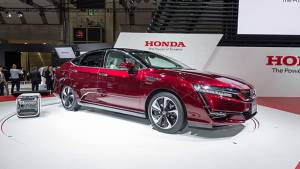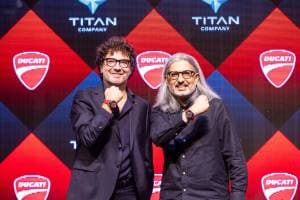Honda Clarity FCV and Clarity plug-in hybrid first look review
This year's SIAM convention had the Government 'bulldoze' the need to electrify cars. As much as we all would hate it, we are indeed going to run out of our beloved gasoline someday and the switch to electric or alternate means of propulsion is inevitable, whether we like it or not. In fact, the theme for this year's Tokyo Motor Show was 'Beyond the Motor', a clear hint at what the future holds for us. As a manufacturer Honda, has been at the forefront when it comes to offering tomorrow's technology today. The carmaker gave us a chance to get up, close and personal with its Clarity series of future-ready cars at its own home ground, the Twin Ring Motegi Circuit in Japan. And the future, if may I say so, looks electric!
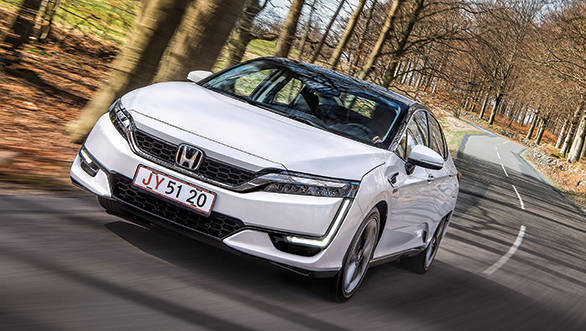
Honda had lined up the Clarity FCV (Fuel Cell Vehicle) and the Clarity PHEV (Plug-in Hybrid Electric Vehicle) for us, though there is a Clarity EV (Electric Vehicle) too. Design-wise both look identical and the styling of course is as futuristic as it gets. The car is generously proportioned and Honda says the Clarity is the world's first five-seater FCV sedan. It has a wide, low slung stance with sharp lines that are designed to help it cut through air as smoothly as possible. The design of the headlights, daytime running lamps and grille are a bit quirky, typical
of EVs, though the car is instantly identifiable as a Honda.
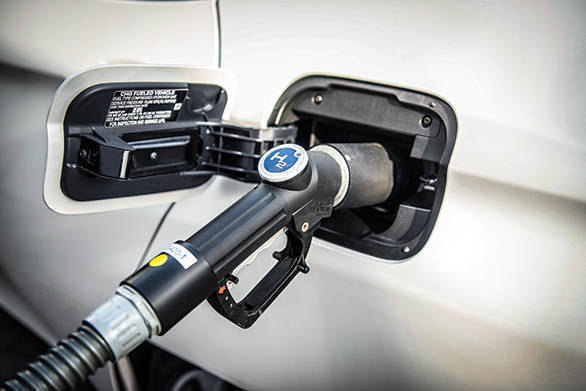
The interior design reminded me of spaceships I've seen in sci-fi movies, particularly the centre console with its floating design and the placement of switches. The gear/drive selector lever has been replaced with switches for P, R, N and D modes. Underneath it is a massive storage space that also houses connectivity and charging options. The Clarity gets a HUD as well. The car's large dimensions translate to an abundance of space, be it for passengers or luggage and that's despite the fact that the floorboard holds the large lithium-ion battery pack.
The hydrogen fuel cell powered Clarity FCV uses an AC synchronous motor to power the wheels, producing 177PS and an impressive 300Nm. Honda claims the car will do 750km on a tankful of 'gas', and the tank can store 141 litres of highly compressed hydrogen. The tank takes a mere 3 minutes to fill and unlike petrol-engined cars the Clarity FCV only emits H2O, or water! Oh, and a tankful of the hydrogen can power a regular house for up to a week! Massive electricity bills savings? You bet!
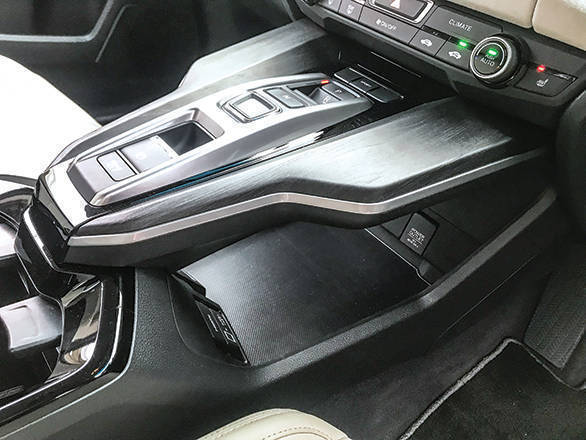
The PHEV on the other hand gets a 1.5-litre, four-cylinder Atkinson Cycle petrol engine , just like the Accord Hybrid sold in India. But on the Clarity the engine does not power the wheels directly and works as a power generator for the electric motor which actually propel the wheels. Honda says the battery pack will let you drive for up to 100km in EV mode.
The Clarity is a good example of how much more potential alternate means of propulsion hold than the average car buyer can imagine. And if you think EVs and the like are boring, think again. Honda also has a 'race' version of the Clarity FCV. With lots of weight reduction (300kg less than the standard Clarity FCV's 1,890kg weight), a lowered height and tweaked performance parameters the Clarity FCV Racing gave us an insight into what future race cars could be like, while not polluting the air at all.
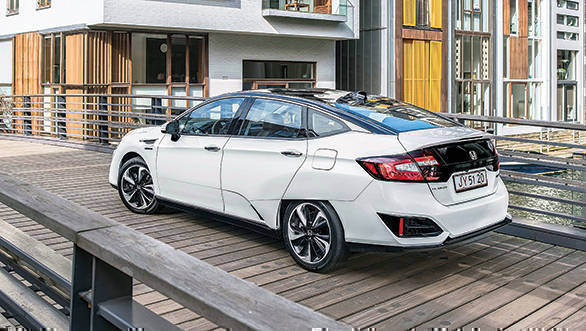
Honda is clear that it wants two-thirds of its global car sales to be electrified by 2030, and like several other manufacturers, is pursuing development of fuel-cell and plug-in hybrids furiously. As much as we love our petrol-engined cars, manufacturers are attempting to make cars that are far more environment-friendly, alternately propelled and will be appreciated by enthusiasts too. Cars like the Honda Clarity are still some time away for our country though, and we can surely let the VTEC kick in until then!
